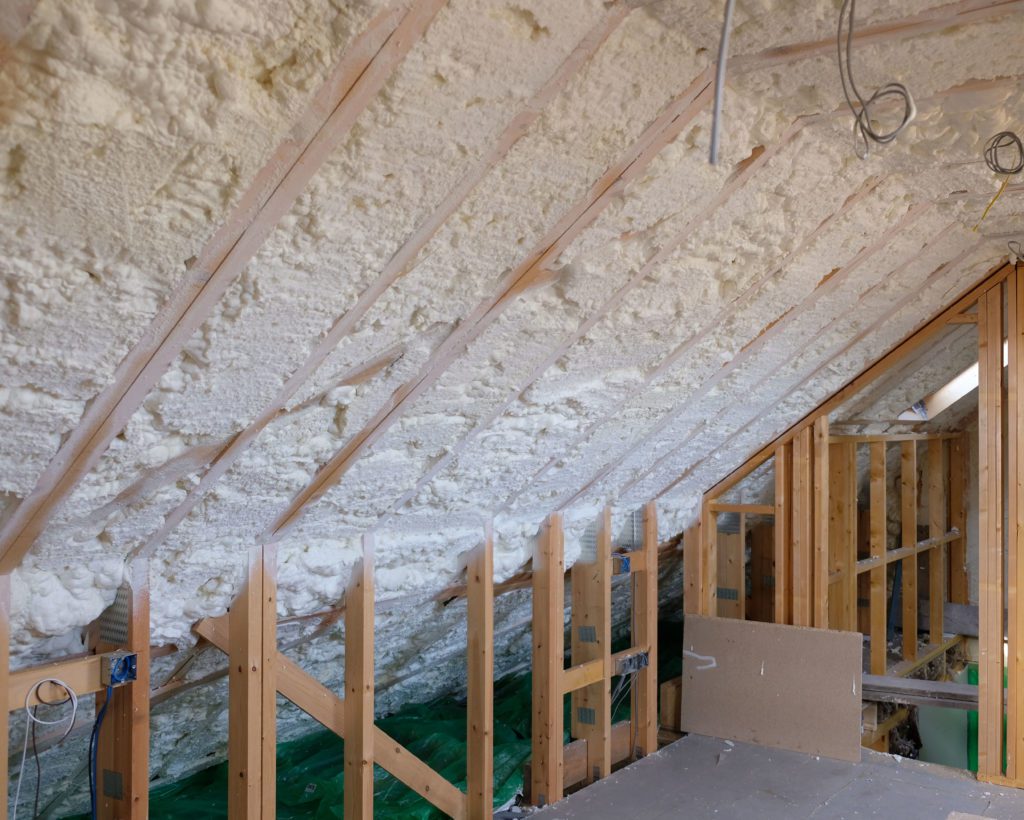
By Paddy Leighton, director, Icynene UK
THE recently published Committee for Climate Change Report “UK Housing: Fit for the Future”, states that better standards of insulation in new build and existing housing stock is vital if we are to address the problem in any meaningful way.
According to the report, 14% of UK CO2 emissions results from energy usage in homes. Another troubling headline was the fact that in 2017, emissions from buildings actually rose by 1% over those of the previous year.
Minimising air leakage
Retro fitting of traditional insulation materials is a complex, time-consuming and expensive affair and one which rarely addresses the issue of air leakage. As up to 40% of a building’s heat loss can be attributed to air leakage (what we would all understand as draughts), it is vital air leakage is included in any programme of measures designed to improve thermal performance.
Modern spray applied insulation systems do a much better job than rigid board and mineral fibre materials as they are designed to expand rapidly when applied, sealing small gaps, service holes and hard to reach spaces.
Basic principle of heat loss
If we go back to basic principles; heat loss in a building occurs through a combination of four processes: conduction, convection, radiation and mass transfer. In the UK, the construction industry focusses primarily on U-values as a measure of conductive heat loss.
Open cell, spray applied insulation systems don’t perform as well as some other types of insulation by this U-value measure. However, if you spend time in high mountain environments you quickly realise it is the wind that strips the heat from your body, and it is the same in buildings – it doesn’t matter what your U-value is if there are draughts.
Breathable, open cell foams not only insulate from conductive heat-loss but also from convective heat loss by controlling air movement. Furthermore, as spray applied foam insulation is extremely flexible, it moves with the structure, maintaining its insulative integrity indefinitely.
Mass transfer is a more complex issue and relates to how much moisture is in the air. The more moisture, the more energy it takes to heat, so to feel warm, damp buildings need more energy than dryer ones.
Studies have shown that moist, humid air can support up to 4,000 times more heat energy than dry air and, as air leaks out of a building it carries this moisture vapour and with it, heat.
Control of air movement
To control humidity, you need to be able to control the air movement in a building and this can only be done if the building is relatively airtight. Spray foam insulation does this effectively by helping to create a ‘sealed box’ environment which allows controlled ventilation and mechanical heat recovery systems to perform efficiently.
High performance, breathable insulation
Icynene is one of a new breed of spray applied insulation system. Developed in Canada to cope with extreme winter temperatures, Icynene FoamLite is a flexible open cell material with a soft, yielding texture. This not only provides outstanding insulation properties, but also allows the building to breath naturally, resisting internal condensation.
Icynene is installed using a pressurised gun system. Foams are applied as a two-component mixture that come together at the tip of a gun forming a foam that expands 100-fold within seconds, closing off all gaps, service holes and hard to get to spaces.
When selecting which spray applied insulation to use, it is important to understand a number of factors: Unlike the urethane foams of 20 years ago, modern spray foams such as Icynene FoamLite use water as the blowing agent. This means the reaction between the two components produces C02 which causes the foam to expand.
As FoamLite expands, the cells of the foam burst, and the CO2 is replaced by air. Consequently, from an environmental perspective, Icynene has a Global Warming Potential (GWP) of 1 and an Ozone Depletion Potential (ODP) of 0 (Zero).
The challenge ahead
With over 60% of our current housing stock originating from the pre-1960’s when little thought was given to heat-loss prevention, the challenge facing the UK in its efforts to reduce carbon emissions are considerable.
Better understanding of the causes of heat loss in buildings and the wider use of new, high performance insulation systems will go a long way to addressing the problem. The challenge is to get these systems adopted quickly and made to work effectively in both the private and public housing sector.











